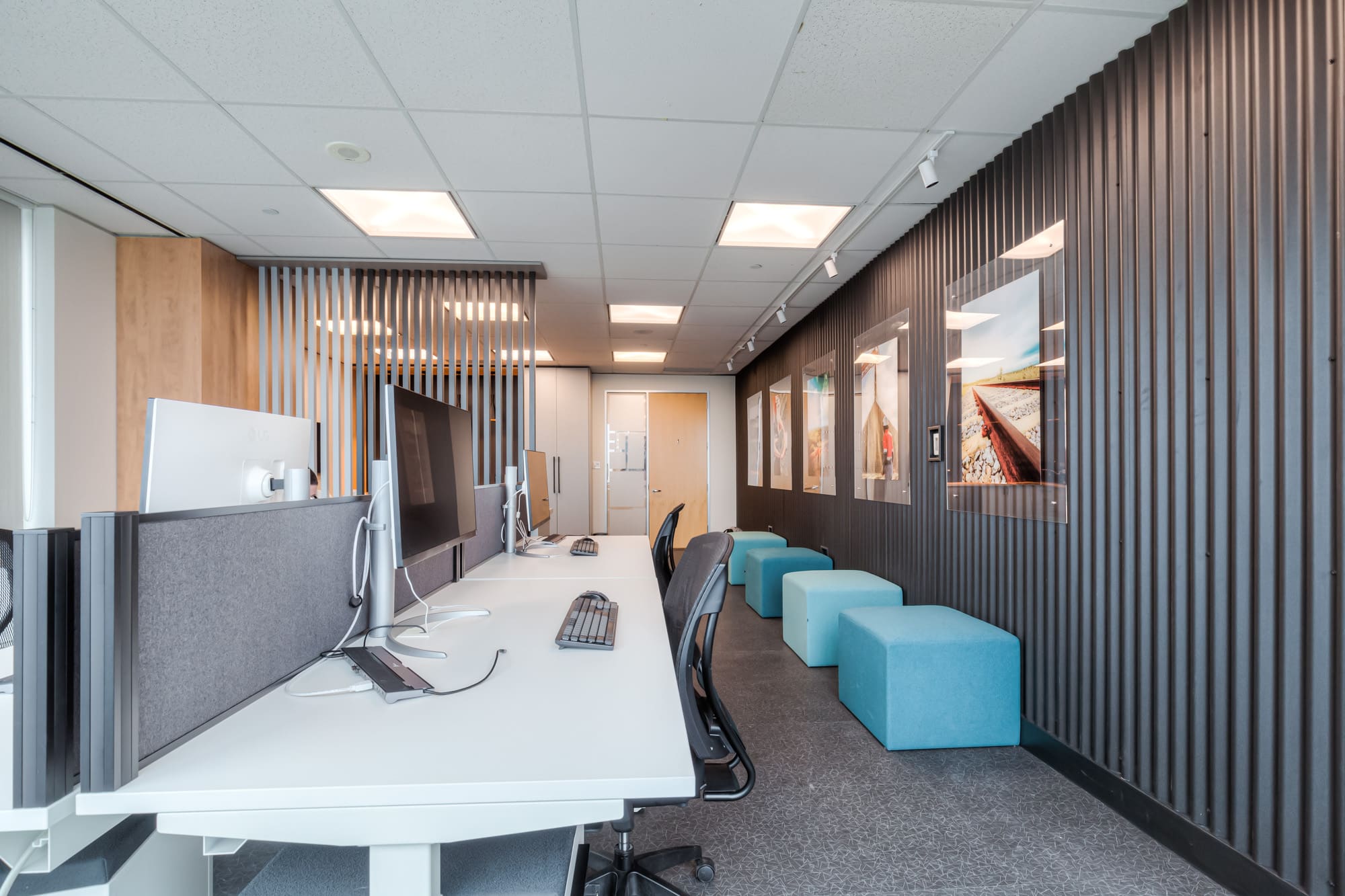In the ever-evolving landscape of modern workplaces, collaboration has emerged as a cornerstone of success for businesses. Recognizing the pivotal role that teamwork plays in achieving organizational goals, companies are increasingly turning to interior design to create workspaces that foster communication, creativity, and a sense of unity among team members. In this article, we will explore how strategic interior design choices can significantly boost team collaboration within the office environment.
Open and Collaborative Spaces:
Interior design has the power to break down physical barriers and create open and collaborative spaces that encourage spontaneous interactions and idea-sharing. Open office layouts with strategically placed workstations, shared tables, and collaborative zones provide an environment where team members can easily engage with one another. These layouts promote a sense of accessibility, making it more likely for employees to share insights, brainstorm, and collaborate on projects.
Flexible Furniture Configurations:
A well-designed office understands the importance of flexibility in furniture configurations. Interior designers can create spaces with adaptable furniture that allows for easy reconfiguration based on the team’s needs. This flexibility facilitates impromptu meetings, team huddles, or the transformation of spaces for different collaborative activities. Moveable furniture and modular seating arrangements enhance the versatility of the workspace.
Dedicated Collaboration Zones:
Striking a balance between open spaces and dedicated collaboration zones is crucial. Interior designers can carve out specific areas within the office designed for team collaboration. These zones may feature comfortable seating, writable surfaces, and technology integration to facilitate brainstorming sessions, team meetings, and collaborative work. By having purposeful spaces for collaboration, employees are encouraged to step away from their desks and engage with colleagues in a conducive environment.
Technology Integration for Seamless Communication:
Effective collaboration relies on seamless communication, and interior design can play a pivotal role in integrating technology solutions. Video conferencing facilities, interactive displays, and shared digital platforms can be seamlessly incorporated into the office design. These technological enhancements ensure that teams can collaborate effortlessly, whether they are working in the same physical space or connecting with remote colleagues.
Breakout Spaces for Informal Collaborations:
Interior designers recognize the importance of informal interactions in fostering team collaboration. Breakout spaces, equipped with comfortable seating and casual furnishings, provide a relaxed environment where employees can gather for spontaneous discussions or team-building activities. These spaces serve as an extension of the formal office, fostering camaraderie and strengthening team bonds.
Enhanced Acoustics for Productive Collaboration:
Maintaining a balance between openness and privacy is crucial for effective collaboration. Interior design solutions, such as acoustic panels, soundproofing elements, and thoughtful placement of furniture, can help control noise levels and create spaces that support focused collaboration. Well-managed acoustics ensure that teams can engage in discussions without disruptions, enhancing the overall quality of collaborative work.
Branding and Team Identity:
Interior design is a powerful tool for reflecting a company’s branding and fostering a sense of team identity. Design elements, such as branded colours, logos, and thematic motifs, can be strategically incorporated into the office space. This not only reinforces the company’s identity but also instills a sense of belonging and unity among team members, enhancing collaboration through a shared organizational culture.
In the contemporary workplace, where collaboration is a linchpin of success, interior design emerges as a catalyst for fostering effective teamwork. By creating open and flexible spaces, integrating technology seamlessly, and providing dedicated collaboration zones, interior designers contribute to an environment where teams can thrive. The strategic use of design elements not only enhances collaboration but also promotes a sense of unity and shared purpose among team members, making the workplace a hub of innovation and productivity. As businesses continue to prioritize collaboration, interior design remains a key driver in shaping the collaborative dynamics of the modern office.

